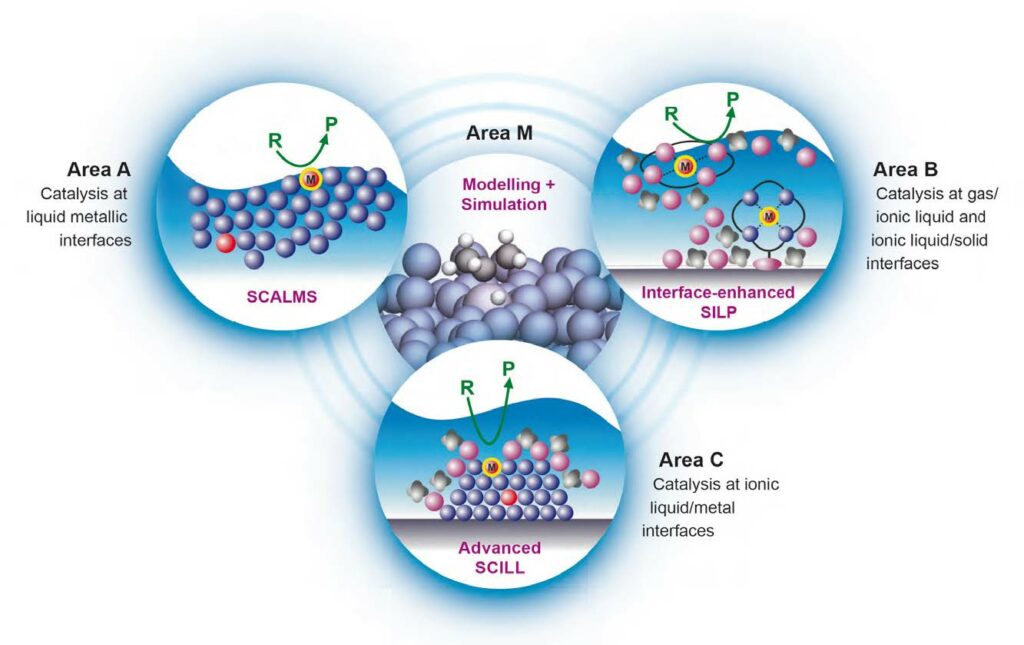Structure of CLINT
Our goal in CLINT is to unlock the tremendous scientific and technological potential of designing catalytic single sites through the special anisotropy and dynamics prevailing at the liquid interface. In fact, we aim at achieving a rational design and knowledge-driven engineering of SLP catalysts whose catalytic performance origins from single sites enriched at the liquid interface. This requires an unprecedented level of tailoring and mastering the relevant dynamic phenomena that determine the formation, reactivity, and stability of catalytic sites in close contact to the gas/liquid or liquid/solid phase boundary. Such a level of understanding has not been achieved to date.
Recent advances in theory, modelling, simulation, and optimisation now enable a detailed description of liquid interfaces. Progress in characterisation methodologies allows for spatial and dynamic phenomena to be tackled at an unprecedented level. These developments are accelerated by the advent of new classes of liquid phases and support materials. Examples include functionalised ILs, liquid alloys, planar substrates with defined cavities at the nanoscale and well-ordered metal oxide nanostructures. Interfaces of and between these innovative liquids and solids are often unexplored but promise a huge potential for creating dedicated material systems for catalysis at liquid interfaces.

SCALMS (Project area A), SILP (Project area B), and SCILL (Project area C) materials have been introduced in the last years and these material concepts have shown very exciting performance in catalytic applications.In fact, the first large-scale technical applications of these concepts have been realised in the recent years. However, these systems are still far from fundamentally understood and fully explored, in particular with respect to the specific influence of active catalytic sites at the liquid interface on the observed selectivity, activity, and robustness. All these approaches to catalytic processes at liquid interfaces will also be explored from a theoretical standpoint (project area M) intended to provide more insight into the microscopic and mesoscopic workings of as well as provide tools for the interpretation and analysis of the systems experimentally investigated by the other project areas by means of modelling and simulation of said systems. CLINT aims for a focused and synergetic research effort by leveraging the full scientific and technological potential of these very promising approaches.
With this very focused and synergistic approach, CLINT differs significantly from the many existing, collaborative research activities dealing with the development of better catalytic materials and processes in
Germany and world-wide. The unique scientific approach of CLINT is the focus on exploring the highly dynamic, anisotropic environment of liquid interfaces to create, tailor, and stabilise
catalytically active sites with unique reactivity and performance.
Nationally and internationally, to the best of our knowledge, there are no research activities with a similar focus as CLINT.
